
Mystical Majesty of the Carpathian Mountains
Discover the Carpathian Mountains in Ukraine, where breathtaking landscapes, rich cultural heritage, and endless outdoor adventures await in this hidden gem of Eastern Europe.
The Carpathian Mountains in Ukraine offer a captivating blend of untamed nature, rich cultural heritage, and breathtaking landscapes. This region is a paradise for nature lovers, adventure seekers, and those looking to immerse themselves in authentic Ukrainian traditions. Stretching across western Ukraine, the Carpathians are a treasure trove of dense forests, rolling hills, and picturesque villages that transport visitors to a simpler, more tranquil time. Hiking trails meander through lush greenery, leading to stunning viewpoints and hidden waterfalls. In the winter, the region transforms into a snowy wonderland perfect for skiing and snowboarding. The mountains are home to diverse flora and fauna, making them a haven for wildlife enthusiasts. Bird watchers will delight in spotting rare species, while those with a keen eye might even catch a glimpse of deer or bears in their natural habitat. The Carpathians are not just about nature, though. They are steeped in history and local folklore. Traditional wooden houses and ancient churches pepper the landscape, offering a glimpse into the region's past. Local festivals, filled with colorful costumes, folk music, and dancing, provide a vibrant introduction to Ukrainian culture. Don’t forget to indulge in the hearty local cuisine, featuring dishes like banosh and traditional Ukrainian borscht, which are sure to warm your soul after a day of exploration.
Local tips in Carpathian Mountains
- Best Time to Visit: Late spring to early autumn for hiking and nature activities; December to February for winter sports.
- Local Transport: Renting a car can provide flexibility, but local buses and trains are economical options to navigate the region.
- Language: Learning a few basic Ukrainian phrases can be very helpful, as English is not widely spoken in rural areas.
- Currency: Carry some cash, especially in smaller villages, as card payments might not always be accepted.
- Respect Nature: Stick to marked trails and follow local guidelines to preserve the pristine environment.
Mystical Majesty of the Carpathian Mountains
The Carpathian Mountains in Ukraine offer a captivating blend of untamed nature, rich cultural heritage, and breathtaking landscapes. This region is a paradise for nature lovers, adventure seekers, and those looking to immerse themselves in authentic Ukrainian traditions. Stretching across western Ukraine, the Carpathians are a treasure trove of dense forests, rolling hills, and picturesque villages that transport visitors to a simpler, more tranquil time. Hiking trails meander through lush greenery, leading to stunning viewpoints and hidden waterfalls. In the winter, the region transforms into a snowy wonderland perfect for skiing and snowboarding. The mountains are home to diverse flora and fauna, making them a haven for wildlife enthusiasts. Bird watchers will delight in spotting rare species, while those with a keen eye might even catch a glimpse of deer or bears in their natural habitat. The Carpathians are not just about nature, though. They are steeped in history and local folklore. Traditional wooden houses and ancient churches pepper the landscape, offering a glimpse into the region's past. Local festivals, filled with colorful costumes, folk music, and dancing, provide a vibrant introduction to Ukrainian culture. Don’t forget to indulge in the hearty local cuisine, featuring dishes like banosh and traditional Ukrainian borscht, which are sure to warm your soul after a day of exploration.
When is the best time to go to Carpathian Mountains?
Iconic landmarks you can’t miss
Bukovel
Discover Bukovel, Ukraine's premier ski resort, where adventure meets luxury in the stunning Carpathian Mountains.

Carpathian National Nature Park
Experience the breathtaking beauty of Carpathian National Nature Park, a national treasure in Ukraine filled with adventure, wildlife, and stunning landscapes.

Maniava waterfall
Experience the breathtaking beauty of Maniava Waterfall in Ivano-Frankivsk Oblast, a serene escape into nature's wonders and a must-see for every traveler.
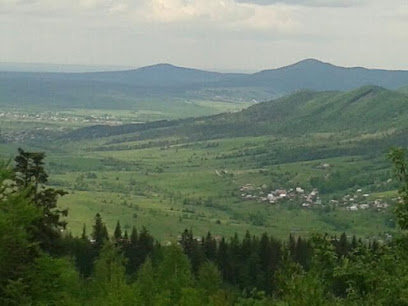
Koruna
Experience the serene beauty of Tatariv at Koruna, where comfort meets adventure in the heart of the Carpathian Mountains.

Manyava Skete
Experience tranquility at Manyava Skete, a historic monastery in Ukraine's picturesque Carpathian mountains, perfect for spiritual retreats and nature lovers.

Karpat·sʹkyy Biosfernyy Zapovidnyk
Experience the breathtaking beauty of Karpat'skyy Biosfernyy Zapovidnyk, a UNESCO World Heritage Site in the heart of Ukraine's Carpathian Mountains.

Serednya mountain
Discover the breathtaking beauty of Serednya Mountain in Ivano-Frankivsk Oblast, where nature meets adventure in Ukraine's stunning landscapes.

Hora Chyvchyn
Explore the breathtaking beauty of Hora Chyvchyn, a serene mountain peak in Ivano-Frankivsk Oblast, perfect for adventurers and nature lovers.

Chornohirsʹkyy Zapovidnyy Masyv
Explore the breathtaking Chornohirsʹkyy Zapovidnyy Masyv in Zakarpattia Oblast, where stunning mountain vistas meet rich biodiversity in a serene natural sanctuary.

Wooded Carpathians
Discover the breathtaking beauty of the Wooded Carpathians in Ivano-Frankivsk Oblast, a nature lover's paradise filled with adventure and tranquility.

Hora Ukernya
Explore the breathtaking Hora Ukernya, a stunning mountain peak offering unforgettable views and serene hiking experiences in Ivano-Frankivsk Oblast.

Reheska
Discover the breathtaking beauty of Reheska, a serene mountain peak in Ivano-Frankivsk Oblast, perfect for nature lovers and adventure seekers.

NAME NOT KNOWN
Explore the stunning mountain peaks of Zakarpattia Oblast, Ukraine's hidden gem for nature lovers and adventure seekers.

Unmissable attractions to see
Maniava waterfall
Experience the enchanting beauty of Maniava Waterfall in Ivano-Frankivsk Oblast, a serene natural wonder perfect for adventure and tranquility.

Manyava Skete
Experience the serene beauty and spiritual essence of Manyava Skete, a historic monastery nestled in the stunning landscapes of Ivano-Frankivsk Oblast.
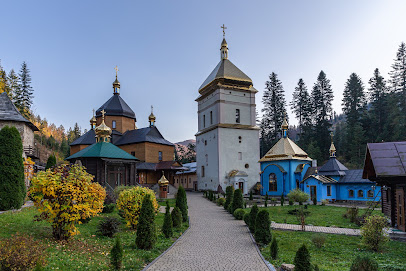
Veretsky pass conquest Memorial
Discover the Veretsky Pass Conquest Memorial: a serene tribute to heroism in the stunning landscapes of Zakarpattia Oblast, Ukraine.

Bunker Liniyi Arpada
Uncover the hidden stories of wartime history at Bunker Liniyi Arpada, a unique museum in Kolochava, Zakarpattia Oblast.
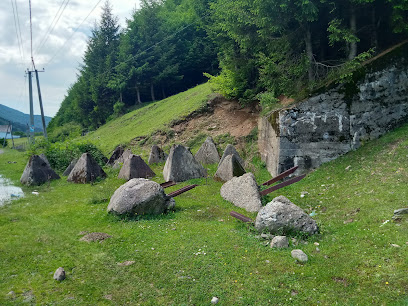
Gorgany Nature Preserve
Discover the breathtaking landscapes and rich biodiversity of Gorgany Nature Preserve, a serene escape in Ivano-Frankivsk Oblast, Ukraine.
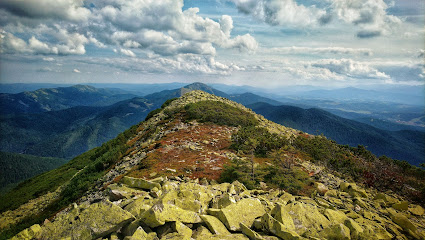
Karpat·sʹkyy Biosfernyy Zapovidnyk
Explore the rich biodiversity and stunning landscapes of Karpat’skyy Biosfernyy Zapovidnyk, a UNESCO World Heritage Site in the heart of the Carpathians.

Muzey Ekolohiyi Hir Ta Istoriyi Pryrodokorystuvannya V Ukrayinsʹkykh Karpatakh
Discover the ecological treasures of the Ukrainian Carpathians at the Museum of Ecology and Nature History, a must-visit for nature lovers and eco-enthusiasts.

Essential places to dine
Ostannya Barykada
Experience authentic Ukrainian cuisine at Ostannya Barykada in the heart of Kyiv, where culture meets culinary delight.
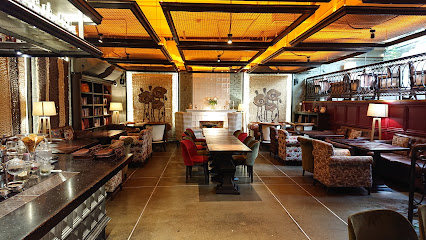
Krasna sadyba
Discover authentic Ukrainian flavors at Krasna Sadyba in Yaremche - where tradition meets comfort amidst stunning natural beauty.
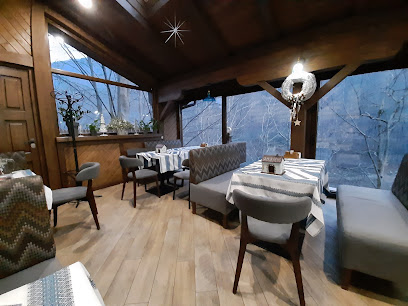
Mushroom House
Experience authentic Ukrainian cuisine at Mushroom House while surrounded by stunning Carpathian Mountain scenery.

Stara Vorokhta
Experience authentic Ukrainian flavors at Stara Vorokhta, nestled in scenic Vorokhta with stunning mountain views.

Vedmezha gora
Experience unparalleled comfort and nature at Vedmezha Gora – your ultimate destination for relaxation and adventure in Yaremche.
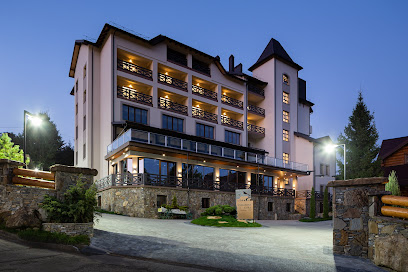
KANAPA restaurant
Discover the essence of Ukrainian culture through exquisite cuisine at Kanapa Restaurant in Kyiv.

Synevyrsʹkyy Pereval
Discover Synevyrsʹkyy Pereval: A charming hotel and restaurant offering stunning mountain views and authentic Ukrainian cuisine.

Hotel Vezha Vedmezha
Experience comfort and adventure at Hotel Vezha Vedmezha, your perfect getaway in Lviv Oblast with top-notch amenities and breathtaking nature.

Salo
Discover Salo: A premier restaurant in Polyanytsya serving authentic Ukrainian cuisine amidst breathtaking landscapes.

Voevodyno Resort
Experience luxury and tranquility at Voevodyno Resort – your gateway to nature in Zakarpattia Oblast.

PetruS-ь
Discover the rich flavors of Ukraine at PetruS-ь, where traditional cuisine meets modern dining in the heart of Kyiv.
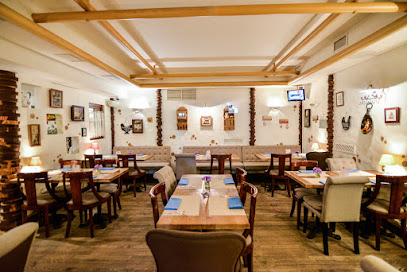
Monysto
Discover authentic flavors at Monysto in Polyanytsya - where delicious pizza meets warm Ukrainian hospitality amidst stunning mountain views.

Vadász Csárda
Discover authentic Hungarian cuisine at Vadász Csárda in Zakarpattia Oblast - a delightful dining experience awaits you.

Grand Hotel Pylypetsʹ
Experience comfort and adventure at Grand Hotel Pylypets in Zakarpattia Oblast - your gateway to breathtaking landscapes.

Osonnya Carpathians Spa Hotelʹ U Skhidnytsi
Discover ultimate relaxation at Osonnya Carpathians Spa Hotel – your gateway to luxury and nature in the heart of Ukraine's stunning landscapes.

Markets, malls and hidden boutiques
Bukovel
Discover Bukovel: A stunning ski resort in the Carpathians, offering year-round adventure, luxurious accommodations, and breathtaking landscapes.

Carpathian Mountains
Explore the breathtaking landscapes of the Carpathian Mountains, a paradise for nature lovers and adventure seekers in Eastern Europe.

Manyava Skete
Discover the tranquility of Manyava Skete, a historic monastery nestled in the breathtaking landscapes of Ivano-Frankivsk Oblast, Ukraine.
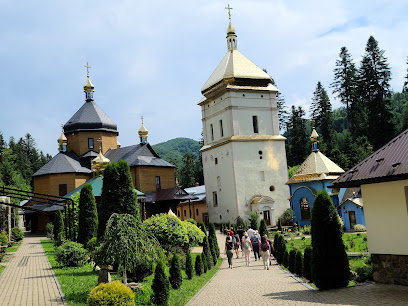
Makovytsia Mountain
Explore Makovytsia Mountain in Ivano-Frankivsk Oblast - a natural paradise offering stunning views and a chance to connect with the beauty of Ukraine.

Музей Хата-гражда. Фільм «Тіні забутих предків»
Explore the cultural heritage of the Hutsul people at the Хата-гражда Museum, celebrating traditions and the iconic film 'Shadows of Forgotten Ancestors.'

BILBERRY’S bakery&cafeteria
Discover the delightful flavors of Bilberry’s Bakery & Cafeteria, a cozy café in Mizhhir'ya offering exquisite pastries and aromatic coffee.

Green Ukraine
Embark on an unforgettable journey through Ukraine with Green Ukraine, your trusted travel agency for personalized adventures and cultural experiences.

Ukrainian souvenirs
Explore Ukrainian Souvenirs: your gateway to authentic handcrafted treasures and cultural keepsakes from Ukraine.

Carpathian Touch
Explore the charm of the Carpathians at Carpathian Touch, your ultimate destination for unique souvenirs and local craftsmanship.

Essential bars & hidden hideouts
Krasna sadyba
Experience the best of Ukrainian cuisine at Krasna Sadyba in Yaremche, where grilled meats and relaxation await in a picturesque setting.

Mushroom House
Experience the charm of Ukrainian cuisine at the Mushroom House, where traditional flavors meet enchanting architecture in a serene setting.

Vedmezha gora
Experience the charm of Vedmezha Gora in Yaremche - a family-friendly restaurant and ecological park blending nature with culinary delights.

Synevyrsʹkyy Pereval
Discover the authentic tastes of Ukraine at Synevyrsʹkyy Pereval, a restaurant and hotel nestled in the breathtaking Carpathian Mountains.
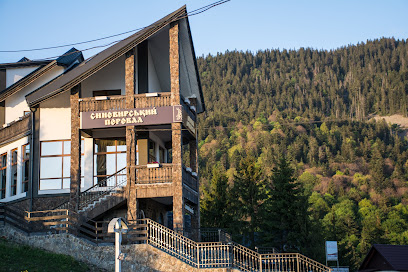
Hotel Vezha Vedmezha
Discover comfort and adventure at Hotel Vezha Vedmezha, a premier destination in the stunning landscapes of Lviv Oblast.

Salo
Experience the essence of Ukrainian cuisine at Salo, a beautiful restaurant in Bukovel offering a unique culinary journey.

Voevodyno Resort
Experience the perfect blend of relaxation and adventure at Voevodyno Resort in the stunning Zakarpattia Oblast of Ukraine.

Grand Hotel Pylypetsʹ
Discover the ultimate blend of luxury and nature at Grand Hotel Pylypets in the breathtaking Zakarpattia Oblast.

Osonnya Carpathians Spa Hotelʹ U Skhidnytsi
Experience ultimate relaxation and adventure at Osonnya Carpathians Spa Hotel, where nature meets luxury in Lviv Oblast.

Koruna
Discover Koruna: A culinary and wellness retreat in Tatariv, offering delicious local cuisine, cozy accommodations, and relaxing amenities.

Premium Club
Discover the culinary delights and serene accommodations of Premium Club in Yaremche, a perfect retreat in the heart of the Carpathians.
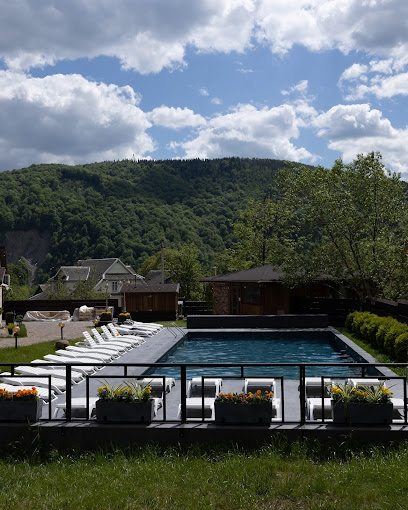
Carparosa Hotel & Restaurant
Experience the charm of Bukovel at Carparosa Hotel & Restaurant, where exquisite cuisine meets unparalleled relaxation in a stunning alpine setting.

Shepit Karpat
Explore the culinary delights of Shepit Karpat, where traditional Ukrainian flavors meet stunning mountain scenery in the heart of the Carpathians.

Bayka
Discover Bayka, the ultimate family-friendly restaurant in Kosiv, offering delicious cuisine alongside a children's club, spa, and recreational activities.

Kolyba
Discover Kolyba, a delightful restaurant in Bukovel, where traditional Ukrainian dishes meet breathtaking mountain views.

Local Phrases about Carpathian Mountains
-
- HelloПривіт
[pryvit] - GoodbyeДо побачення
[do pobachennya] - YesТак
[tak] - NoНі
[ni] - Please/You're welcomeБудь ласка
[budʲ laska] - Thank youДякую
[dyakuyu] - Excuse me/SorryВибачте
[vybachte] - How are you?Як справи?
[yak spravy?] - Fine. And you?Добре. А ви?
[dobre. A vy?] - Do you speak English?Ви говорите англійською?
[vy hovoryte anhliysʲkoyu?] - I don't understandЯ не розумію
[ya ne rozumiyu]
- HelloПривіт
-
- I'd like to see the menu, pleaseЯ б хотів подивитися меню, будь ласка
[ya b khotiv podyvytysya menyu, budʲ laska] - I don't eat meatЯ не їм м'ясо
[ya ne yim m'yaso] - Cheers!Будьмо!
[budʲmo] - I would like to pay, pleaseЯ б хотів заплатити, будь ласка
[ya b khotiv zaplatyty, budʲ laska]
- I'd like to see the menu, pleaseЯ б хотів подивитися меню, будь ласка
-
- Help!Допомога!
[dopomoha!] - Go away!Піди геть!
[pidy hetʲ!] - Call the Police!Виклич поліцію!
[vyklych politsiyu!] - Call a doctor!Виклич лікаря!
[vyklych likarya!] - I'm lostЯ загубився
[ya zahubyvsya] - I'm illЯ хворий
[ya khvoryy]
- Help!Допомога!
-
- I'd like to buy...Я б хотів купити...
[ya b khotiv kupity...] - I'm just lookingЯ просто дивлюсь
[ya prosto dyvlyusʲ] - How much is it?Скільки це коштує?
[skilʲky tse koshtuye?] - That's too expensiveЦе занадто дорого
[tse zanadto doroho] - Can you lower the price?Чи можете ви знизити ціну?
[chy mozhete vy znyzyty tsinu?]
- I'd like to buy...Я б хотів купити...
-
- What time is it?Котра година?
[kotra hodyna?] - It's one o'clockОднієї години
[odniyeyi hodyny] - Half past (10)Пів на (десять)
[piv na (desyatʲ)] - MorningРанок
[ranok] - AfternoonПополудні
[popoludni] - EveningВечір
[vechir] - YesterdayВчора
[vchora] - TodayСьогодні
[sohodni] - TomorrowЗавтра
[zavtra] - 1один
[odyn] - 2два
[dva] - 3три
[try] - 4чотири
[chotyry] - 5п'ять
[pyatʲ] - 6шість
[shistʲ] - 7сім
[sim] - 8вісім
[visim] - 9дев'ять
[devyatʲ] - 10десять
[desyatʲ]
- What time is it?Котра година?
-
- Where's a/the...?Де знаходиться...?
[de znakhodytʲsya...?] - What's the address?Яка адреса?
[yaka adresa?] - Can you show me (on the map)?Чи можете ви мені показати (на мапі)?
[chy mozhete vy meni pokazaty (na mapi)?] - When's the next (bus)?Коли наступний (автобус)?
[koly nastupnyy (avtobus)?] - A ticket (to ....)Квиток (до ...)
[kvitok (do ...)]
- Where's a/the...?Де знаходиться...?
History of Carpathian Mountains
-
The Carpathian Mountains in Ukraine have been inhabited since ancient times. Archaeological evidence suggests that various tribes, including the Thracians and Dacians, settled in these regions as early as the Bronze Age. These early inhabitants were primarily engaged in farming, hunting, and basic metalworking.
-
During the 9th to 13th centuries, the Carpathian Mountains were part of the Kievan Rus', a federation of Slavic tribes under the rule of the Varangians. The region played a crucial role as a buffer zone and a trade route, connecting the Byzantine Empire with Northern Europe. The influence of Kievan Rus' brought Christianity, which left a lasting impact on the culture and architecture of the region.
-
In the mid-13th century, the Mongol Empire extended its reach into Eastern Europe, including the Carpathian Mountains. The Mongol invasion led to significant devastation and depopulation of the area. However, the rugged terrain of the Carpathians provided a natural refuge for many inhabitants. Over time, the local population adapted to the new political landscape, which led to a period of relative isolation.
-
From the 14th to the late 18th centuries, the Carpathian Mountains became part of the Polish-Lithuanian Commonwealth. This era was marked by increased trade, cultural exchange, and the introduction of new agricultural practices. The influence of Polish and Lithuanian nobility is evident in the region's architecture and cultural traditions, including folk music and dance.
-
In the late 18th century, the Carpathian Mountains fell under the control of the Austro-Hungarian Empire. This period saw significant economic development, including the expansion of railways and the exploitation of natural resources such as timber and minerals. The empire's multicultural policies also led to a diverse population, including Ukrainians, Poles, Hungarians, and Germans, each contributing to the region's rich cultural tapestry.
-
The Carpathian Mountains were strategic locations during both World Wars. During World War I, the region saw fierce battles between the Austro-Hungarian and Russian armies. In World War II, the Carpathians again became a battlefield, witnessing conflicts between the Axis and Soviet forces. The harsh terrain and climate made military campaigns particularly challenging, and many local communities suffered greatly during these tumultuous times.
-
After World War II, the Carpathian Mountains became part of the Soviet Union. The Soviet era brought industrialization and collectivization, which significantly altered traditional ways of life. However, it also led to the development of infrastructure, including roads and public services. Since Ukraine's independence in 1991, the Carpathian region has seen a revival of cultural traditions and an increase in tourism, attracting visitors with its stunning landscapes and rich history.
Carpathian Mountains Essentials
-
The Carpathian Mountains in Ukraine can be accessed via several routes. The nearest major cities with international airports are Lviv and Ivano-Frankivsk. From Lviv, you can take a train or bus to various destinations in the Carpathians such as Yaremche, Vorokhta, or Rakhiv. The journey typically takes between 3 to 6 hours, depending on your specific destination. From Ivano-Frankivsk, you can reach Yaremche or Bukovel by bus or taxi in about 1.5 to 2 hours.
-
Public transportation in the Carpathians is primarily served by buses and trains. Local buses (marshrutkas) are a common and affordable way to travel between towns and villages. Trains offer a more comfortable journey and scenic views, though they may be slower. Taxis and car rentals are also available for more flexibility. For exploring remote areas, consider renting a car or hiring a local guide with a 4x4 vehicle.
-
The official currency in Ukraine is the Ukrainian Hryvnia (UAH). Credit cards are accepted in most hotels, restaurants, and larger shops, but it is advisable to carry cash for smaller establishments and rural areas. ATMs are available in larger towns such as Yaremche and Rakhiv, but it is wise to withdraw sufficient cash before heading into more remote areas. Currency exchange offices are also found in larger towns.
-
The Carpathian Mountains are generally safe for tourists. However, exercise standard precautions such as not walking alone at night in unfamiliar areas and keeping an eye on your belongings in crowded places. Petty theft can occur, particularly in tourist hotspots. While there are no specific high-crime areas targeting tourists, always stay vigilant and aware of your surroundings.
-
In case of emergency, dial 112 for immediate assistance. This number connects to emergency services including police, fire, and medical help. There are medical facilities in larger towns, but for serious health issues, you may need to travel to a city like Lviv or Ivano-Frankivsk. It is recommended to have travel insurance that covers medical emergencies. Pharmacies in towns offer over-the-counter medications for minor health issues.
-
Fashion: Do dress in layers, as the weather can change quickly. Wear sturdy footwear for hiking. Avoid wearing overly revealing clothing. Religion: Do respect local customs and traditions. When entering churches and monasteries, dress modestly and remove your hat. Public Transport: Do be respectful and offer your seat to elderly passengers. Don’t eat or drink on public transport. Greetings: Do greet people with a firm handshake and maintain eye contact. Eating & Drinking: Do try local dishes such as banosh and bograch. Don’t refuse hospitality, as it is considered impolite.
-
To experience the Carpathian Mountains like a local, visit traditional Hutsul markets where you can buy handmade crafts and local produce. Engage with locals; they are usually friendly and willing to share stories about their culture and history. Don’t miss out on local festivals such as the Hutsul Festival in Verkhovyna. For a unique experience, try staying in a traditional wooden cottage (kolyba) and participating in local traditions like bread baking or cheese making.
-
The Carpathian Mountains have a temperate climate. The best time to visit is from May to September for hiking and outdoor activities, as the weather is generally mild and pleasant. Winter sports enthusiasts should visit from December to February when the region is covered in snow, and ski resorts like Bukovel are in full swing. Always check weather conditions before your trip, as mountain weather can be unpredictable.
Nearby Cities to Carpathian Mountains
-
Things To Do in Chernivtsi
-
Things To Do in Sighisoara
-
Things To Do in Iasi
-
Things To Do in Baia Mare
-
Things To Do in Cluj-Napoca
-
Things To Do in Brasov
-
Things To Do in Ivano-Frankivsk
-
Things To Do in Focsani
-
Things To Do in Satu Mare
-
Things To Do in Orhei
-
Things To Do in Chișinău
-
Things To Do in Mukachevo
-
Things To Do in Deva
-
Things To Do in Râmnicu Vâlcea
-
Things To Do in Ternopil













